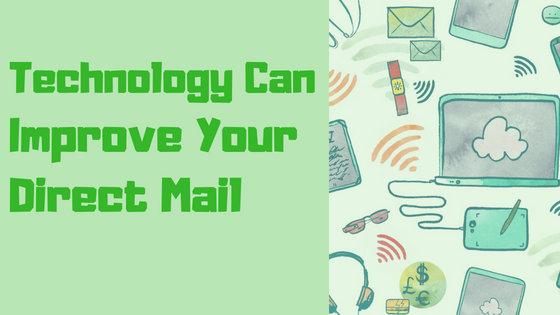At this point in time, most marketers accept that direct mail generates response. A recent Data & Marketing Association Response Rate Report indicates that the response rate for direct mail is 3.7%. The response rate for all digital channels combined is less than 0.75%. Marketers believe in direct mail so much, spending on it is growing again. In 2016, brands spent $46 billion on direct mail, according to the Winterberry Group.
If you’re using direct mail as one of your primary marketing channels (as you should be), there are a few ways to make sure you get a response rate that meets or exceeds the average. Not surprisingly, they all have to do with technology.
IP Targeting
According to the Interactive Advertising Bureau (IAB), IP targeting is digital messaging that is delivered to a user’s geographic location as determined by his or her Internet Protocol (IP) address. This technology lets marketers serve digital ads directly to specific IP addresses that are mapped from the physical addresses on their mail list. When combined with direct mail, IP targeting technology lets marketers direct one-to-one messages to prospects both in print and online.
IP targeting is better than traditional geo-targeting technology because it directs advertising to specific households and businesses. If you have a defined audience with a specific interest in your product or service, IP targeting is a cost-effective option because there is less waste than traditional digital approaches. Combining IP targeting with direct mail is an ideal technique for universities, financial institutions, banks, realtors and professional service firms.
Enhanced Finishing
Print is a visual, tactile medium. The more senses you can engage with it the better the reader will remember your message. The physicality of print is something digital marketing cannot match.
Innovative technologies are helping marketers make better physical connections by adding special effects to mail pieces. They are digital technologies, so they can provide the effects at a much lower cost than in the past, when most special effects required the use of a die. Nowadays, digital foils, special laminates and white inks can be applied to printed pieces to increase the likelihood that they will stand out against competing messages.
Track Your Mail
One of the challenges with direct mail is knowing if (and when) it has been delivered. Well, you no longer need to guess about it. The USPS has provided advanced technology that lets you track individual pieces through the mail, so you can know exactly when they are going to be delivered. You can get information on both the projected delivery date and the actual delivery date.
By knowing when mail gets delivered, you can adjust drop dates as needed to ensure your pieces arrive at the right time, which is key for follow up and planning. You can also use your insight into delivery times to consider using standard vs. first class postage, which can potentially save you money. Additionally, knowing projected delivery dates lets you anticipate customer response. With advanced notice, you can prepare for it and make sure your team is ready and available to handle it.
Personalization
The saying in direct mail used to be “spray and pray.” Brands sent out a large volume of mailers and hoped some hit the mark. This approach wasted a lot of marketers’ money. Today, with data-driven technologies, marketers can take a more targeted approach and personalize their messages to each recipient. According to Marketo, 79% of consumers are likely to take advantage of a brand’s offer when it is personalized to reflect their previous engagements with the brand. An InfoTrends study from 2016 showed that more than 75% of marketers consider delivering more personalized print communications to be “important” or “very important.”
Instead of relying on volume like the old days, you can target just the prospects who are most likely to make a purchase. And, you can appeal to them as individuals. Direct mail is a particularly good channel for personalization because it offers a variety of formats and the ability to connect with the recipient physically. You should be using your customer data to personalize the content and images in your direct mail, so you ensure a positive response.



Leave a Reply